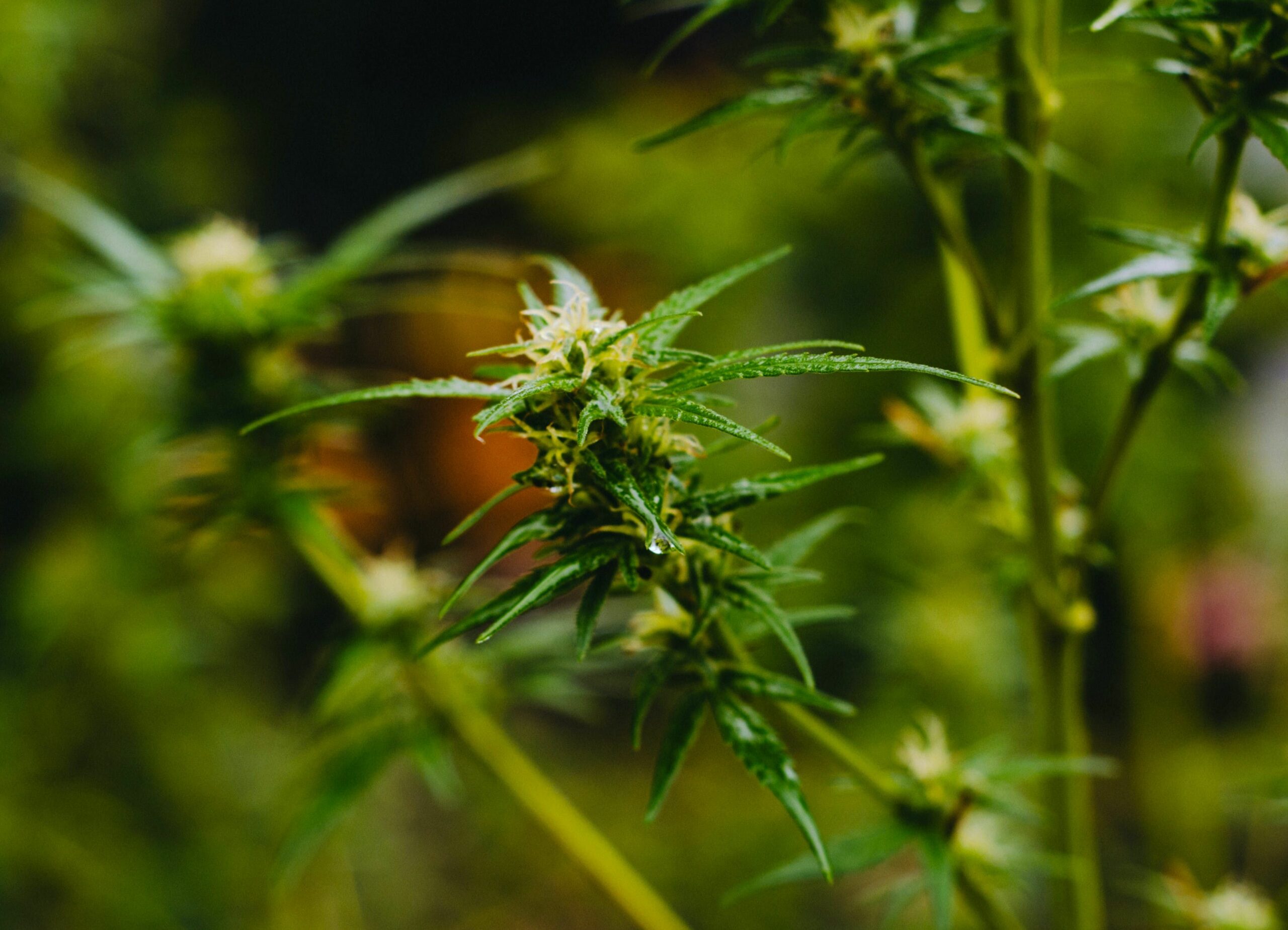The cannabis plant has been a part of human life for centuries, from holy anointing oil mentioned in the Bible to depression treatments in 17th century England. But we still know very little about the plant. Despite marijuana’s recent resurgence as a medicine, the scientific research on its intricacies and therapeutic potential is still in its infancy—and hampered here in the U.S. because of its federal prohibition.
The more we learn about cannabis, the more apparent the plant’s complexities and effects on our bodies. One thing we do know for sure is that cannabis contains dozens of chemical compounds called cannabinoids, all tasked with special jobs. The exact number of cannabinoids is yet to be confirmed, but common consensus among researchers is that there are at least 100. These cannabinoids interact with and activate cannabinoid receptors throughout the body, resulting in different effects.
FOLLOW US ON FACEBOOK & INSTAGRAM
You probably know two cannabinoids already: tetrahydrocannabinol (THC) and cannabidiol (CBD). These are easily the most well-known and recognizable cannabinoids to date. But there are dozens of others that show promise for treating all sorts of medical conditions.
10 Cannabinoids You Should Know
#1: CBC (Cannabichromene)
This cannabinoid shares a chemical structure very similar to THC, CBD and cannabinol (CBN). CBC is a non-psychoactive cannabinoid that interacts with cannabinoid receptors in the brain and could very well contribute greatly to the analgesic effects of cannabis overall. Not only does it help relieve pain and inflammation, one study suggests CBC, when used in conjunction with CBD, can also act as an antidepressant.
CBC:
- Is non-psychoactive
- Can be an effective pain reliever because it binds with TRPV1 and TRPA1 receptors, both linked to pain perception
- Encourages the release of natural endocannabinoids like anandamide, also known as the bliss molecule, for its euphoric effects
- Is effective in treating inflammation and skin conditions
RELATED: CANNABINOIDS: CHEMICAL COMPOUNDS WITH HUGE THERAPEUTIC POTENTIAL
#2: THCA (Tetrahydrocannabinol Acid)
THCA is a precursor to the more popular THC. When cannabis flowers are still growing on the plant stalk, THCA is pretty abundant (10–20%). But as the cannabis is cut and cured, and when heat is applied for consumption, the THCA turns into THC. Cannabis concentrates like resin or hash oil made from high-THC plants typically have a higher rate of THCA as well. While research on THCA is still slim, the little we do have shows a great deal of therapeutic potential.
THCA:
- Is non-psychoactive
- Can help treat nausea and stimulate appetite
- Shows potential as a neuroprotectant against neurodegenerative diseases like multiple sclerosis
- Is great for treating inflammation from arthritis and lupus
#3: CBN (Cannabinol)
If there’s one cannabinoid on this list that’s most misunderstood, it’s CBN. Just like THCA turns into THC, THC turns into CBN when exposed to oxygen or UV light. Improper storage or packaging without UV protection can lead to a higher amount of CBN. This cannabinoid often gets a bad reputation because higher CBN levels means less THC and less of a high. Plus, CBN can often make people feel sleepy. But don’t make any hasty judgments—CBN is one of the most promising cannabinoids out there.
CBN:
- Is non-psychoactive
- Can help with sleep issues like narcolepsy, insomnia, sleep apnea and more
- May ease the overgrowth of skin cells, which can reduce psoriasis flare-ups and help with MRSA when applied as a topical
- Contains strong anti-inflammatory properties, aiding in pain relief
- Interacts with TRPV2 receptors, which are high-threshold heat sensors, making it a potential treatment for burn victims
#4: THCV (Tetrahydrocannabivarin)
THCV is very similar in structure to THC, and it comes with its own psychoactive effects as well. Where THCV differs most drastically from its more famous relative is that THCV is an appetite suppressant—so don’t expect the munchies if you consume cannabis rich in THCV. To find cannabis with higher THCV levels, look for landrace strains from Africa like Durban Poison and ask your budtender for lab test results. If you vaporize your cannabis, be sure to turn up the heat settings because THCV has a higher boiling point at 428 degrees F than most cannabinoids do. Just be aware that this higher temperature could make your vaping experience feel more like smoking and make your psychoactive effects feel more powerful.
THCV:
- Is psychoactive
- Can help fight weight gain due to its appetite suppressant qualities
- Has the ability to regulate blood sugar and promote glycemic control in type 2 diabetics, according to a 2016 study
- When used in conjunction with other cannabinoids, can fight against seizures, tremors and other motor control issues
- Is known for its euphoric highs and fast onset
#5: CBG (Cannabigerol)
This non-acidic parent of THC and CBD is only found at very small levels (1%), and it doesn’t cause psychoactive effects. Since CBG comes in such low levels, it has long been considered a minor cannabinoid. But it shows promise as a medicine due to its relationship with some very specific systems in our body.
CBG:
- Is non-psychoactive
- Shows potential for treating pain
- Can help ease inflammatory bowel disease
- Reduces intraocular pressure, great news for those suffering from glaucoma
- Can act as an antimicrobial, making it a potential treatment for MRSA
- Has been shown to have neuroprotective qualities in mice and could be a potential treatment for those with neurodegenerative diseases like Huntington’s disease and multiple sclerosis
#6 CBDA (Cannabidiolic Acid)
CBDA is the raw, acidic form of the popular cannabinoid CBD. CBDA can be found in raw hemp plants. But when heat is introduced, CBDA changes into CBD through a process called decarboxylation. For a long time, CBDA was considered an inactive cannabinoid, only of consequence when it turns into CBD. But that perception is changing as more research is completed. Much like its better-known relative, CBDA is effective in fighting inflammation and body pain, and as a mood stabilizer.
CBDA:
- Is non-psychoactive
- Can be found in raw high-CBD cannabis plants
- Contains anti-inflammatory properties
- Is an effective anti-nausea treatment in mice
- Acts as a neuroprotectant
- Has shown to inhibit MDA-MB-231 breast cancer cell migration in cell cultures examined outside of the body
#7 CBDV (Cannabivarin)
This is yet another cannabinoid that doesn’t get the credit it’s due. CBDV is the pre-cursor to THCV, but that isn’t CBDV’s only important quality. So far, research on CBDV has shown potential as a treatment in two main areas: epilepsy and bone growth.
CBDV:
- Is non-psychoactive
- Reduces seizure activity in brain slices examined ex vivo and in mice and rats
- Fights signs of nausea in rodents
- Is found at higher levels in wild-grown cannabis
#8 CBGA (Cannabigerolic Acid)
CBGA is the mother of all cannabinoids, giving life to THC, CBD, CBC, CBG and more through different forms of biosynthesis. Because it’s considered a precursor to cannabinoids, it gets significantly less scientific attention than the cannabinoids it produces. But we’re starting to learn that CBGA has similar analgesic and anti-inflammatory properties to its cannabinoid offspring.
CBGA:
- Is non-psychoactive
- Can work as an analgesic to help relieve pain, much like THC and CBD can
- Helps fight inflammation like THC and CBD do
#9 CBCA (Cannabichromenate)
CBCA is a raw cannabinoid, found in the highest quantities before the plant is cut and processed. As it’s heated or aged, CBCA goes on to produce CBC and other cannabinoids that are relatively unknown and unstudied, such as CBL and CBLA. Like so many other parent cannabinoids, CBCA was thought to be an inactive chemical compound for quite some time, but that’s beginning to change.
CBCA:
- Is non-psychoactive
- May be responsible for antimicrobial properties found in some cannabis strains, but the reasons for this are still being studied
- May be useful as a non-psychoactive alternative to THC for treating nausea
- Could help treat cancer. According to a U.S. government-funded study: “The data presented in this report suggest for the first time that [a] component in the cannabis plant, CBDA, offers potential therapeutic modality in the reversal of cancer cell migration, including aggressive breast cancers.”
#10 Delta-8 THC
When we think about THC, most people think about delta-9 THC because that’s the kind of THC that makes you feel high. But, there’s a whole other kind of THC you may be totally unaware of: Delta-8 THC. While still psychoactive, its psychoactive effects are not as potent as its more well-known counterpart, but its medical benefits could be just as impressive.
Delta-8 THC:
- Is psychoactive
- Has shown the ability to inhibit tumor growth in mice
- Completely prevented vomiting in eight child cancer patients in Israel
- Stimulates appetite in mice
- Is the subject of two U.S. government-awarded patents, on how to produce it and the other regarding its anti-emetic uses
You learn something new every day. Next time you purchase cannabis, ask for lab test results and see if any of these cannabinoids are on the list.
Photo credit: Shane Rounce
If you’re new to cannabis and want to learn more, take a look at our Cannabis 101 post. HelloMD can help you get your medical marijuana recommendation; it’s easy, private and 100% online.






